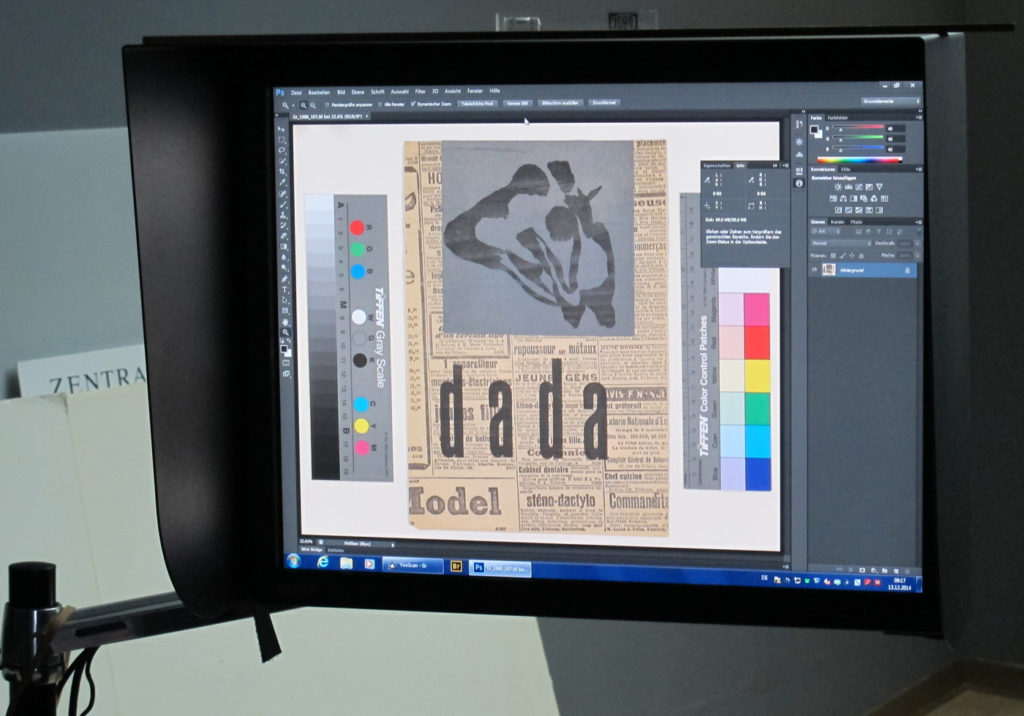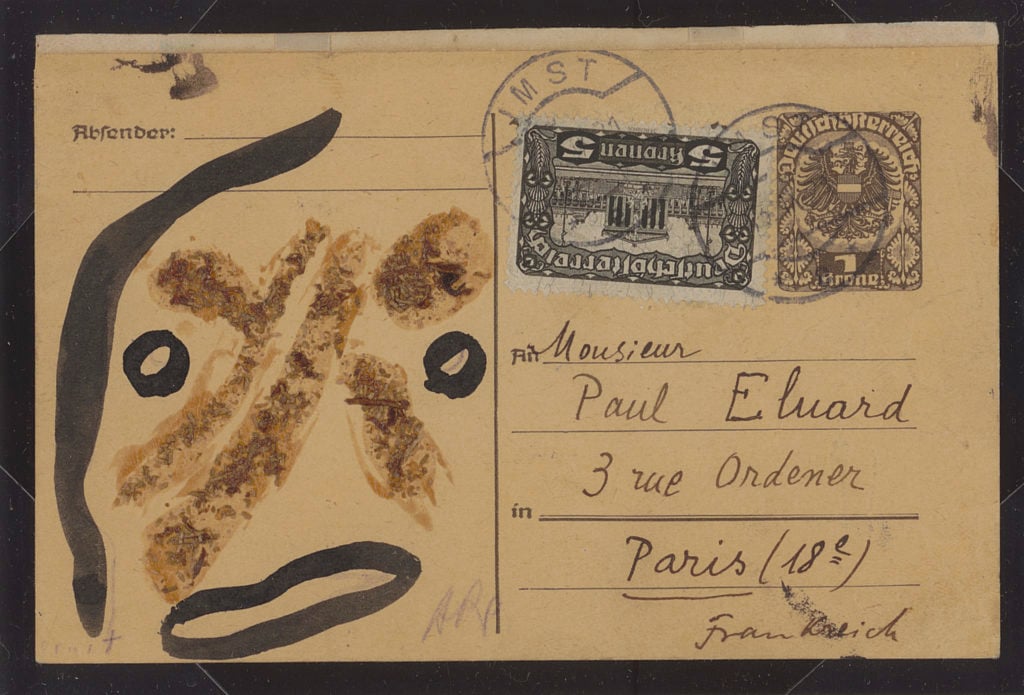Art World
Kunsthaus Zürich Digitizes 400 Dada Documents
Hundreds of rare, fragile works on paper have been preserved for PDF-posterity.

Hundreds of rare, fragile works on paper have been preserved for PDF-posterity.

Alyssa Buffenstein

At the tail end of the centennial of the Dada movement, Kunsthaus Zürich has finished digitizing its collection of over 400 original pieces of Dada ephemera. The entire assortment of works on paper, photographs, letters, books, magazines, flyers, and manuscripts is now available—and thankfully, easily searchable—online.
Dada was an international art movement that changed the trajectory of Modernism in the early 20th century, from hotspots in New York, Paris, and Berlin, to tendrils in Georgia, Italy, Japan, and Russia. But in Zürich, the legendary Cabaret Voltaire incubated Swiss Dada, and now, the Kunsthaus Zürich preserves its legacy for the digital age.
Works and notes made by Dada gatekeepers Marcel Duchamp, Man Ray, Hans Arp, Tristan Tzara, and Hugo Ball are now given a second life, besides other artists like Hannah Höch, Francis Picabia, André Breton, and Kurt Schwitters. More than 50 artists are represented in total.
Dada spawned the readymade, paying little mind to the quality of its materials; paper in the early 20th century was not always top quality, either. Hence, hundreds of original works on paper, many of which have been loaned to institutions worldwide, are now in fragile condition, a detriment to researchers and Dada connoisseurs.

Hans Arp, Max Ernst and Tristan Tzara, Postcard to Paul Eluard (1921). Image courtesy Kunsthaus Zürich, ©2015 ProLitteris, Zurich/Estate of Tristan Tzara.
So a digitization team, led by Kunsthaus Zürich curator Cathérine Hug, library director Thomas Rosemann, Dada expert Raimund Meyer, and restorer Jean Rosston, worked with the Digitization Center of the Zentralbibliothek Zürich to make the documents available to a larger audience.
For some conservation departments, it is common practice to scan only the cover page of a volume, but this effort scanned covers, spines, backs, and every page—some volumes containing up to several hundred pages. Only original, primary literature forms the collection, no reprints, making it especially sought-after.
The museum hopes that this careful archival project will lessen the need for handling the delicate works on paper in the future. It boasts a collection of nearly 750 Dada works in total, also including painting and sculpture, which were not scanned.
Peruse the online archive at the museum’s website, Dada Digital. It features an optimized search function that allows users to search the full text of the original documents, with TIFF files of the color scans available for download.